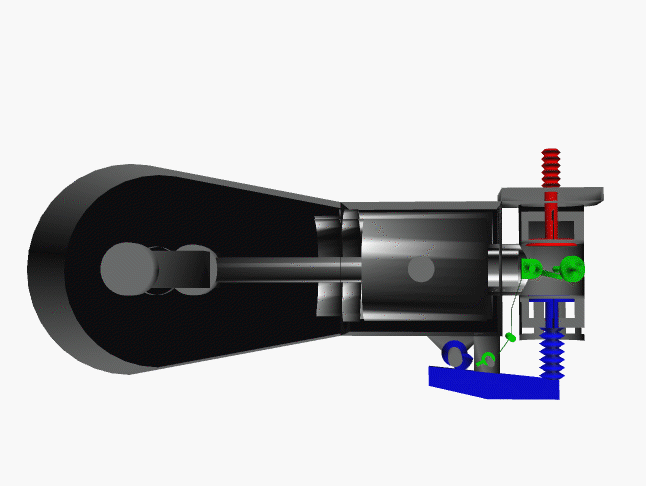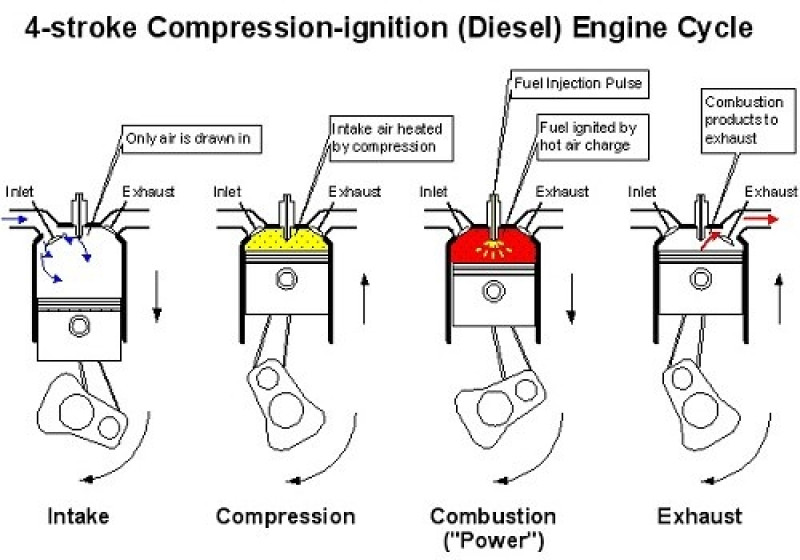

Phases of gas exchange are typical of two-stroke conventional IC engines. To lower residual gases ratio and to cool hot surfaces, cylinder scavenging, accompanied by the discharge of some amount of fresh air charge into the exhaust system, is performed. When the fresh air stream reaches the bottom of piston 2 it turns and expels exhaust gases, concentrated along the cylinder axle, through exhaust valve 4 into the exhaust passage 3. Then the fresh air starts swirling as a dense bed along cylinder walls and displacing to its center and wrings exhaust gases from the cylinder walls to its axle. The fresh air, preliminary compressed in the engine turbocharger and additionally compressed and cooled in the supercharger with inter-cooler, is supplied into the working cylinder 1 through tangential inlet passages 5 placed at a certain angle to the cylinder head surface. Inlet valves 6 are located on periphery of the cylinder head exhaust valve 4 is along the cylinder axle or with a small offset. The schematic gas exchange is shown in 0. Two-stroke gas exchange is performed through the inlet and exhaust valve unlike scavenging ports in conventional two-stroke diesel engine. Four-stroke gas exchange is performed like in ordinary four-stroke diesel engine. The essence of the innovation is to improve gas exchange during the two-stroke mode of engine operation. This feature allows increasing the vehicle power-to-weight ratio when it is necessary in accordance with the changing vehicle operation and road conditions.Įligible areas of activity for the proposed innovations are: (1) combat tank diesel engines, (2) combat vehicle and heavy army truck diesel engines, (3) heavy truck diesel engines, (4) special purpose vehicles diesel engines (emergency vehicles, fire trucks and others), and (5) engines in electrical generator sets.


The engine with proposed improvements is capable of doubling the engine output power and of holding it up for a certain period (time depends on a type of the engine) without overheating. Scavenging in four-stroke and two-stroke mode of operation is fulfilled through the same inlet and exhaust valves.

The proposed improvements to conventional four-stroke internal combustion engine (ICE) accelerate its gas exchange and allow switching the ICE (especially Diesel) from four-stroke to two-stroke regime during engine operation. Internal combustion engine with 2 / 4 (two and four) stroke switching concept. Internal combustion engine with 2-stroke/4-stroke switching during its operation Summary:


 0 kommentar(er)
0 kommentar(er)
